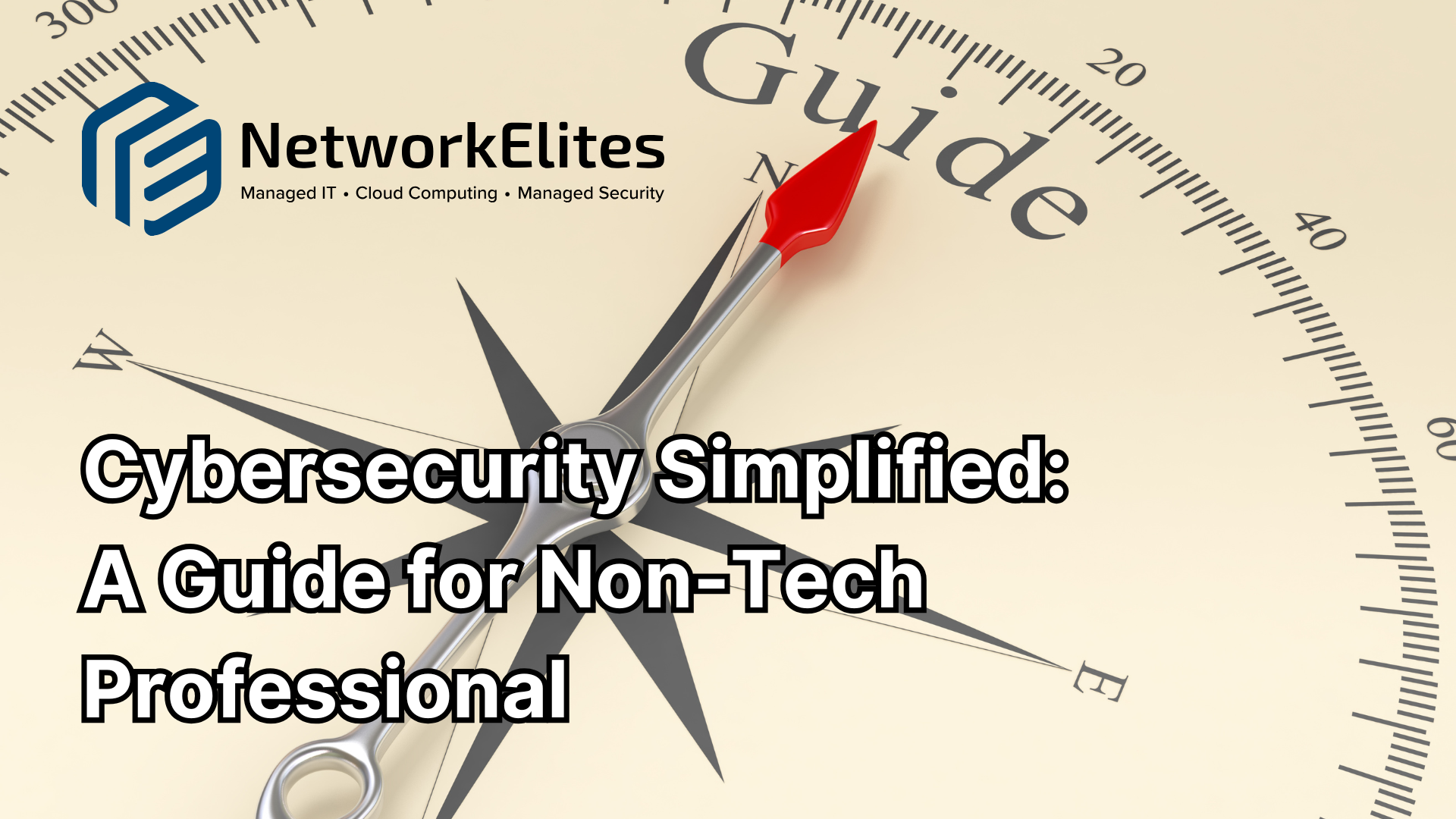Cybersecurity Made Simple for Non-Tech Professionals
In today's digital age, cybersecurity is no longer just a concern for IT departments. It's a crucial aspect for all of us, especially non-tech professionals, small business owners, and educators. With cyber threats becoming more sophisticated, understanding basic cybersecurity principles is vital to protect personal and professional data. This guide aims to demystify cybersecurity, offering practical advice and tools that anyone can use to stay secure online.
Why Cybersecurity Matters for Everyone
Cybersecurity isn't just a technical issue; it's a universal necessity. For non-tech professionals, the risks can seem abstract, but without proper protection, cyber threats can cause significant harm. From identity theft to financial loss, the consequences are real and pervasive. Small business owners face similar challenges, needing to protect their business data from breaches. Educators, too, have a responsibility to safeguard their students' information. Knowing the basics of cybersecurity can prevent many of these issues.
One of the key reasons cybersecurity is essential is the rapid increase in data breaches. In 2022, data breaches exposed over 4 billion records globally, affecting individuals and organizations alike. For small businesses, the impact can be devastating, with 60% of small businesses closing within six months of a cyberattack. Therefore, understanding the importance of cybersecurity and implementing protective measures is critical for sustainability and peace of mind.
Furthermore, cyber threats evolve rapidly, making it crucial for everyone to stay informed and proactive. Non-tech professionals often serve as the first line of defense, as human error remains a leading cause of security breaches. By fostering a culture of cybersecurity awareness, individuals and organizations can mitigate risks and ensure a safer digital environment for all stakeholders.
Common Cybersecurity Threats Faced by Non-Tech Professionals
Understanding common cybersecurity threats is the first step toward effective protection. Non-tech professionals, small businesses, and educators need to be aware of the various dangers lurking online.
One prevalent threat is phishing, where attackers trick individuals into providing sensitive information like passwords or credit card numbers. These attacks often come disguised as legitimate emails, leading unsuspecting users to malicious websites. According to recent studies, phishing attacks account for over 90% of data breaches, highlighting the importance of vigilance.
Another significant threat is malware—malicious software designed to harm or exploit any programmable device or network. Malware can range from viruses and worms to ransomware, which encrypts data until a ransom is paid. Small businesses and educators are particularly vulnerable, as they may not have robust security measures in place to detect and prevent such intrusions.
Finally, weak passwords and outdated software present substantial security risks. Many non-tech professionals use simple or repeated passwords, making it easier for cybercriminals to gain unauthorized access. Additionally, failing to update software regularly leaves systems susceptible to known vulnerabilities. By recognizing these threats, individuals can take proactive steps to protect themselves and their organizations.
Practical Steps for Improving Cybersecurity
Enhancing cybersecurity doesn't require a technical background. Simple practices can significantly reduce the risk of falling victim to cyberattacks.
One fundamental step is using strong, unique passwords for different accounts. Password managers can help generate and store complex passwords, making it easier to maintain security without sacrificing convenience. Experts recommend using a combination of letters, numbers, and symbols to create passwords that are difficult to crack.
Regularly updating software is another critical practice. Software updates often include patches for security vulnerabilities, making it essential to install them promptly. Automated updates can streamline this process, ensuring systems remain protected without manual intervention.
Implementing two-factor authentication (2FA) provides an additional layer of security. By requiring a second form of verification, such as a text message or fingerprint, 2FA makes unauthorized access more challenging for cybercriminals. Encouraging the use of 2FA across all accounts can enhance overall security for individuals and organizations alike.
How to Spot Phishing Attempts and Protect Personal Data
Phishing scams are increasingly sophisticated, but there are telltale signs to look out for. Recognizing these signs can prevent potential security breaches and protect sensitive information.
One common indicator of phishing attempts is unexpected communication, such as an email or message from an unknown sender requesting personal information. Legitimate organizations rarely ask for sensitive data via email, so it's crucial to verify the sender's identity before responding.
Phishing emails often contain urgent language, pressuring recipients to act quickly. This sense of urgency is intended to bypass rational decision-making. Non-tech professionals should be cautious of messages demanding immediate action, particularly those involving financial transactions or account verification.
Checking for inconsistencies in email addresses, links, and websites can also help identify phishing attempts. Cybercriminals often use slight variations to mimic legitimate domains. Hovering over links to reveal their true destination and scrutinizing email addresses for subtle differences can thwart their efforts.
The Role of Education and Policies in Enhancing Cybersecurity Awareness
Education is a powerful tool in combating cybersecurity threats. By fostering a culture of cybersecurity awareness, individuals and organizations can build resilience against cyberattacks.
Training employees and students on cybersecurity best practices is an effective way to enhance security awareness. Regular workshops and seminars can keep everyone informed about the latest threats and how to respond to them. Encouraging open communication about potential vulnerabilities can also empower individuals to address security concerns proactively.
Establishing clear cybersecurity policies is crucial for maintaining consistency and accountability. These policies should outline acceptable use of technology, procedures for reporting security incidents, and guidelines for managing sensitive information. Regular policy reviews ensure they remain relevant and effective in the face of evolving threats.
Collaborating with cybersecurity experts can provide organizations with valuable insights and strategies for safeguarding their digital assets. By partnering with professionals, non-tech individuals can gain confidence in their ability to protect themselves and their organizations from cyber threats.
Tools and Resources for Non-Tech Professionals to Enhance Cybersecurity
A variety of tools and resources are available to help non-tech professionals bolster their cybersecurity defenses. These resources can simplify the process of implementing security measures and provide ongoing support.
Cybersecurity software is an essential tool for protecting devices and networks. Antivirus programs, firewall applications, and intrusion detection systems can help identify and neutralize threats before they cause harm. Many of these tools offer user-friendly interfaces, making them accessible to individuals with limited technical expertise.
Online courses and webinars offer valuable knowledge and insights into cybersecurity best practices. Platforms like Coursera, Udemy, and LinkedIn Learning provide a wealth of educational content tailored to different skill levels. By participating in these courses, non-tech professionals can stay informed about the latest threats and security strategies.
Community forums and support groups can also be valuable resources. Engaging with like-minded individuals allows for the exchange of ideas and experiences, fostering a sense of community and shared responsibility. By collaborating with others, non-tech professionals can enhance their cybersecurity knowledge and build a network of support.
The Importance of Continuous Improvement in Cybersecurity Practices
Cybersecurity is an ongoing process that requires continuous attention and adaptation. By maintaining a proactive approach, individuals and organizations can stay ahead of emerging threats and protect their digital assets.
Regularly reviewing and updating security practices is essential for staying current. Conducting periodic assessments of existing measures and identifying areas for improvement can help ensure that defenses remain robust and effective.
Encouraging a culture of curiosity and learning can drive continuous improvement in cybersecurity practices. By staying informed about the latest trends and developments, non-tech professionals can adapt their strategies to align with evolving threats.
Investing in ongoing education and training is crucial for maintaining a high level of cybersecurity awareness. Individuals and organizations that prioritize learning and growth will be better equipped to face the challenges of an interconnected world.
In conclusion, cybersecurity is a critical concern for non-tech professionals, small business owners, and educators alike. By understanding common threats and implementing practical security measures, individuals can protect themselves and their organizations from cyberattacks. Through education, collaboration, and continuous improvement, the path to a secure digital future becomes more attainable for all.








